UNDP enhancing resilience against shocks and conflicts in Karamoja
March 22, 2024
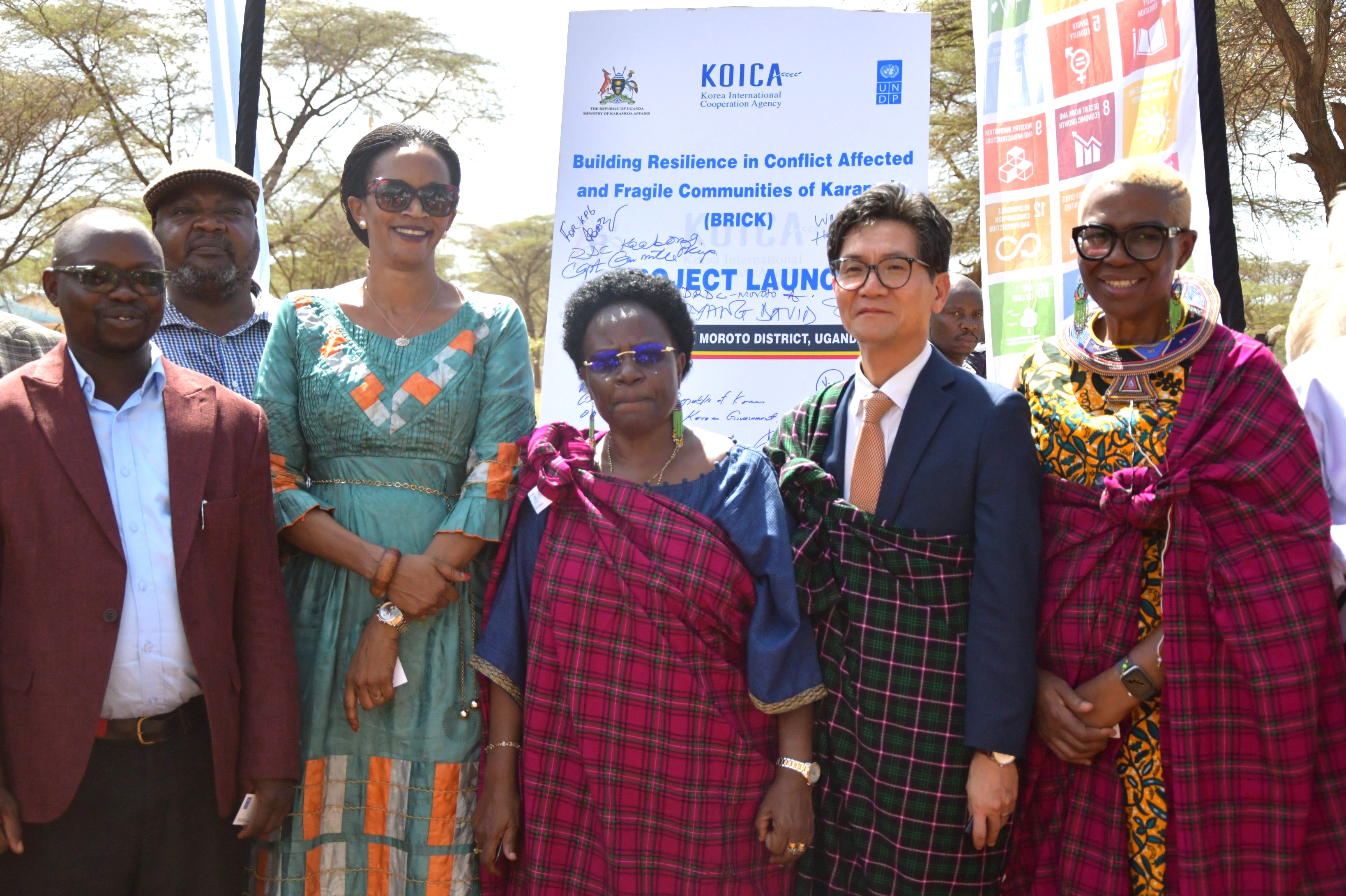
(L-R) Minister of State, Office of the Prime Minister - Karamoja Affairs, Minister of State, Office of the Prime Minister - Relief, Disaster Preparedness and Refugees, Representative of the Chairperson of the Karamoja Members of Parliament Group, the County Administrative Officer for Kaabong, Ambassador of the Republic of Korea H.E. Park Sung-Soo, and UNDP Resident Representative Nwanne Vwede-Obahor commemorate the BRICK project launch
The Governance and Peace Strengthening team at the United Nations Development Programme in Uganda (UNDP) set up camp at the Rupa Sub-County grounds in Moroto District. This marked the auspicious launch of the Building Resilience in Conflict-Affected and Fragile Communities of Karamoja (BRICK) project. The BRICK project signifies a vital 26-month collaborative effort between the Karamoja communities, Government, the Korea International Cooperation Agency (KOICA), and UNDP. This partnership would seek to reinforce the capabilities, assets, and activities of communities from three districts that are, required for a resilient means of living. Enabling them to cope with and recover from stress and shocks that have previously been driven by a combination of conflicts and a complex weather disposition.
The Assistant Chief Administrative Officer for Moroto District, Mr. Samuel Lokong, who oversees Rupa Subcounty generously provided the grounds to host this ground-breaking launch. It was not the first time that the UNDP team was back at Rupa. On two other separate occasions, the Districts, UNDP and KOICA held discussions here with communities to understand the scope of the underlying issues. These discussions were then jointly consolidated into a set of structured interventions tailored to the subcounty, aimed at empowering these communities to cope with and recover from stresses and shocks. Similar engagements had previously been undertaken in Nadunget subcounty also in Moroto District, Nakapelimoru and Rengen in Kotido District, and Timu and Loyoro in Kaabong District. So when the Resident District Commissioner (RDC) of Kotido, Mr. Ambrose Onoria, who is also the Regional whip of RDC’s in Karamoja, used during his remarks at the launch, the analogy of a Brick, being used to build steady and resilient systems for these communities and in a way securing their future, in retrospect, he was recalling: a) this intricate engagement with communities and stakeholders through a process that gave rise to this BRICK project, and b) the systematic programmatic approach adopted by the BRICK project towards achieving these objectives.
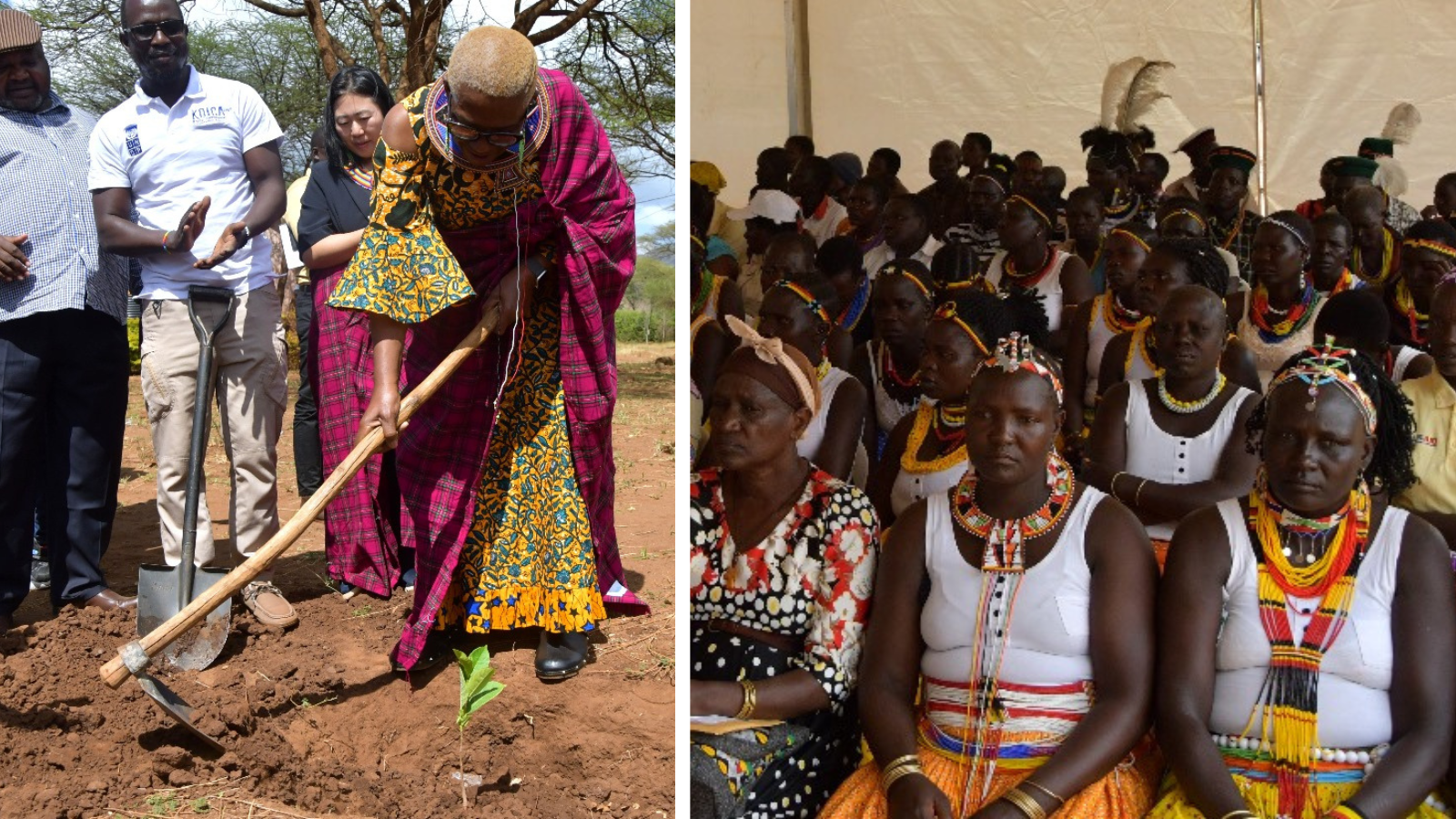
(L) UNDP Resident Representative Ms. Nwanneakolam Vwede-Obahor marks the BRICK launch through planting of a drought resistant tree species, symbolic to rooting mitigation measures to address Climate Change in the region; (R) Community members from each of the three districts participate in the launch of the BRICK project
Over 350 stakeholders attended the launch of the BRICK project at Rupa. This approach to leaving no one behind ensured that community members from each of the sub counties identified to benefit from the project, members of parliament, non-governmental organizations and religious institutions, district political and technical leadership, security agencies, other United Nations organizations, UNDP, KOICA and Embassy of the Republic of Korea, witnessed the commencement. The list of attendees seemed extraordinarily long for a project launch. However, the long list was a symbolic manifestation of the solidarity required to deal with the complex issues affecting these districts. Some of these issues were longstanding. The legacy of the conflict in Karamoja is linked to the community assets of livestock, which are a central livelihood means. Ownership of livestock, transhumance, and effects of climate change on this livelihood system are important factors in peace and security: a) at the inter-district level within Karamoja, b) between regions (Karamoja and Teso or Karamoja and Acholi), and c) across the international border with Kenya and South Sudan. Additionally, these districts had in the past years, been severely affected by cyclic drought patterns, which had detrimental effects on agricultural and livestock production, and water availability in general. In combination with other underlying factors, these three districts and the Karamoja region in general, had, over the years, registered very low performance with respect to a majority of socio-economic indicators. By extension, the Karamoja region had one of the highest multidimensional poverty values in Uganda. A “whole-of-society” approach therefore offered a more comprehensive and sustainable way to address these challenges.
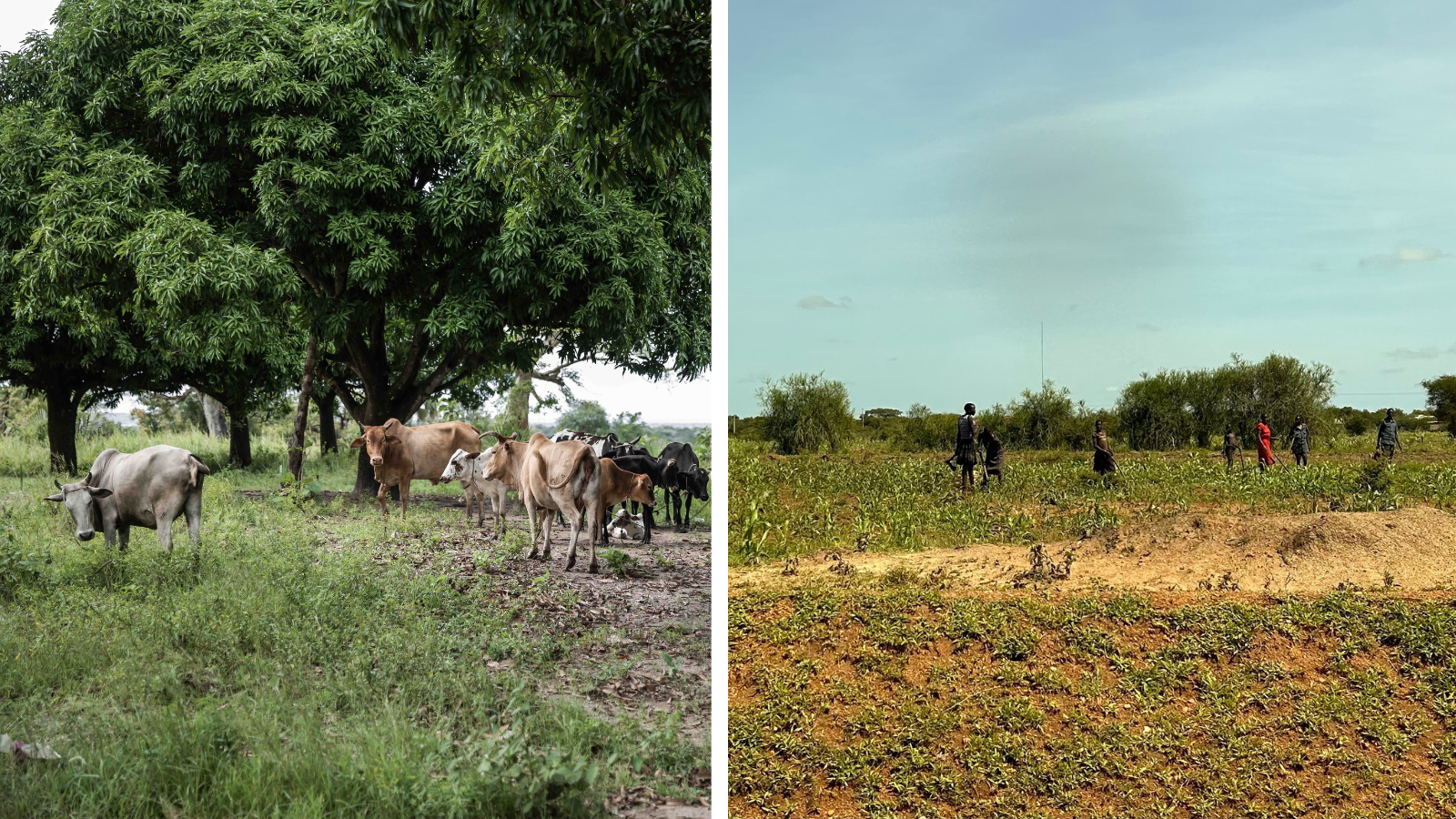
Agriculture and livestock based livelihoods options are relied upon by many community members in the Karamoja region
The district leadership and national government representatives referenced the challenging dynamics of the Karamoja region. Over the years, these factors have disenfranchised the communities and contributed to intergenerational poverty. The BRICK project, designed and to be implemented in alignment with Government development priorities in these communities, and its cooperative approach of ensuring that results as had been set out for achievement were being realized in close coordination with stakeholders was recognized by different speakers. The UNDP Resident Representative and Ambassador of the Republic of Korea in Uganda, speaking at the event, further emphasized the need for effective cooperation amongst all actors in ensuring the objectives of BRICK were being realized right at the community level. In this way progress towards the objectives of facilitating the transitioning of the region out of the complex poverty cycle would be steadfast, in line with the established district development solutions.
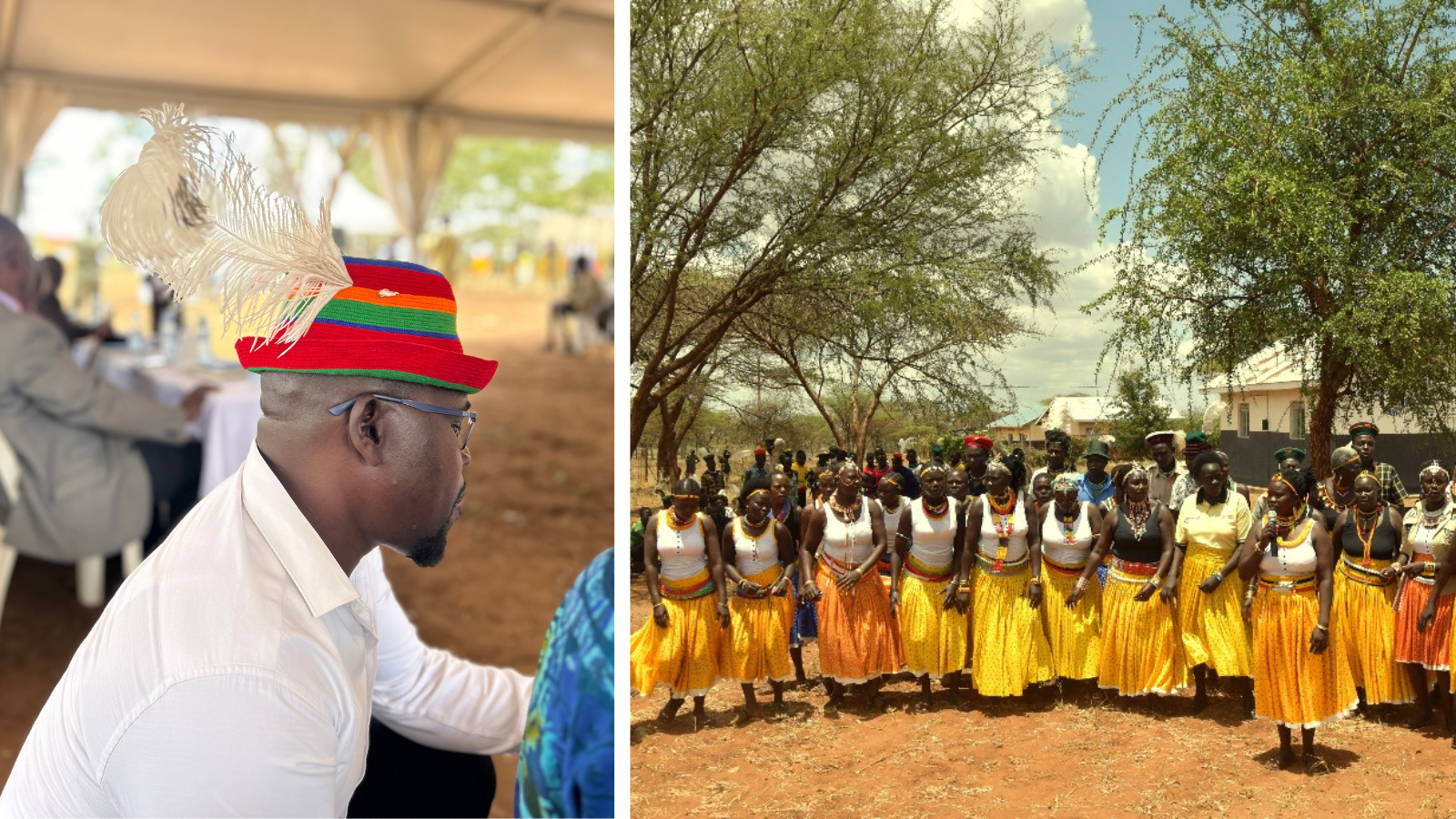
Community culture and heritage, a strong feature of local development is displayed by a number of participants at the launch of the project
Beyond the insightful remarks at the launch event, the vibrant cultural displays by community members truly captured everyone's attention. Their dances, attire, and adorned artifacts showcased the depth of Karamojong culture and rich societal heritage. These cultural interludes offered a glimpse of what success for the BRICK project could mean – a future where many of the region's challenges are overcome. We were informed that such community dances were performed during occasions where: there was assessed to be the prevalence of peace in communities, bountiful harvests, increase in livestock heads, celebration of community milestones such as birth of children (and their naming), marriage, and many other such occasions that punctuated community life as it was known by the locals. Sitting next to one community member, I sought to understand the choice of adorning an Ostrich feather attached to a hat. I had since noticed that few people had this outfit, some with one feather, some with two, some with three. White feathers, in that case. I soon understood that the feather depicts the gracefulness of an Ostrich, with meanings ranging from symbolizing peace, celebration and prosperity. I also learnt that when more than one feather was worn, it was symbolic of authority, leadership and respect. So, only elders wore more than one feather. Community elders in this society, both women and men were an important part of local level infrastructures for peace. Community culture and heritage of the people of Karamoja is a well-known attribute in Uganda and globally.
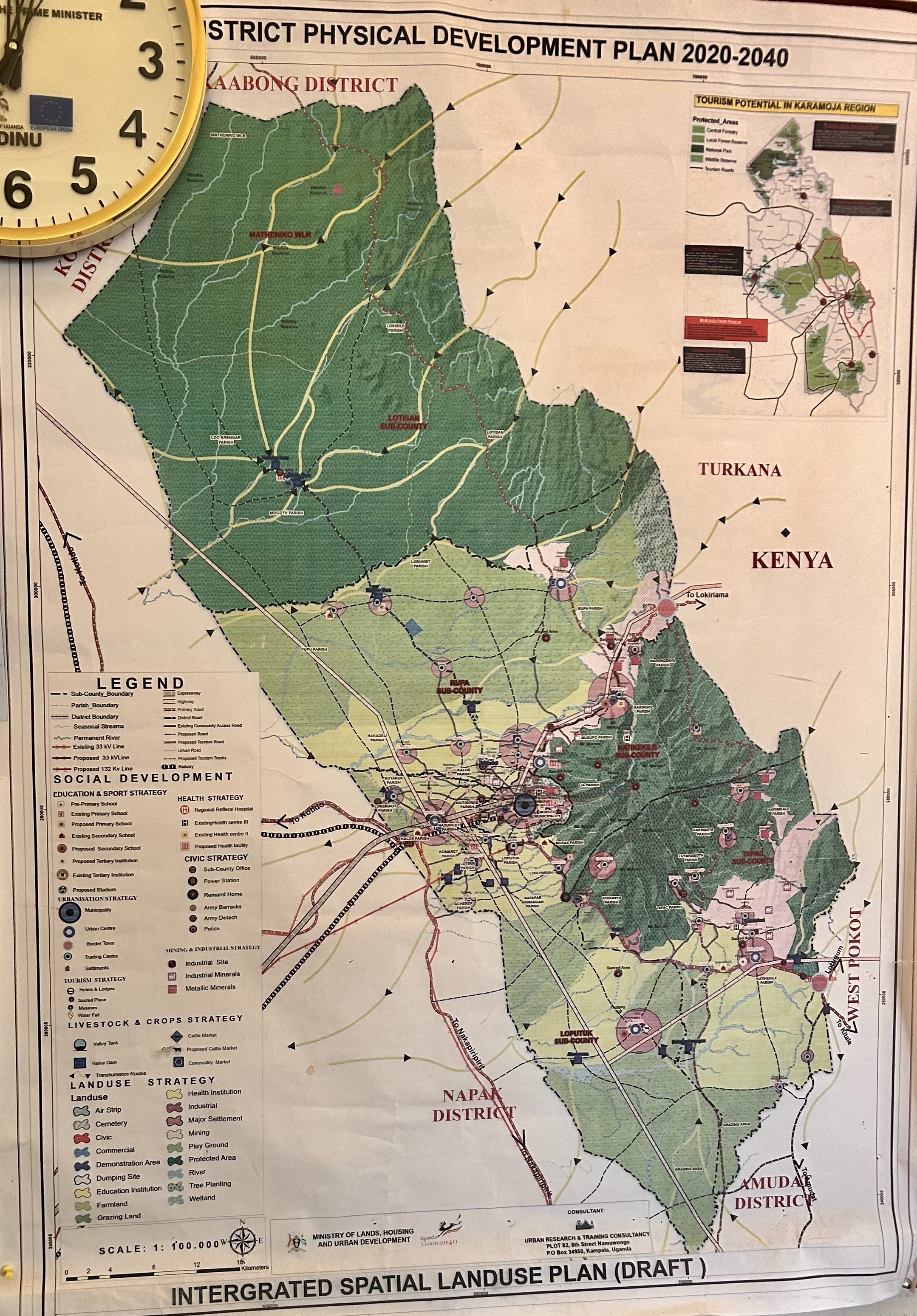
A geo-spatial map of Moroto District, bordering two other project Districts, on display at the Moroto District Offices, illustrates district development prospects in the context of Uganda’s Vision 2040
Culture flourishes in a peaceful and secure environment. Therefore, when leader after leader appreciated the BRICK projects’ dimensions seeking to further entrench peaceful co-existence and social cohesion, it also resonated with the projects’ offering of this element as a critical foundation for community resilience. Peaceful co-existence and social cohesion initiatives in the project have been designed in recognition that peace was not only a means to an end, but also a much-desired end of its own in the region. It was also seen as: a) an enabler of lasting development, b) as a facilitator of human capital development, and c) as an enabler of local production.
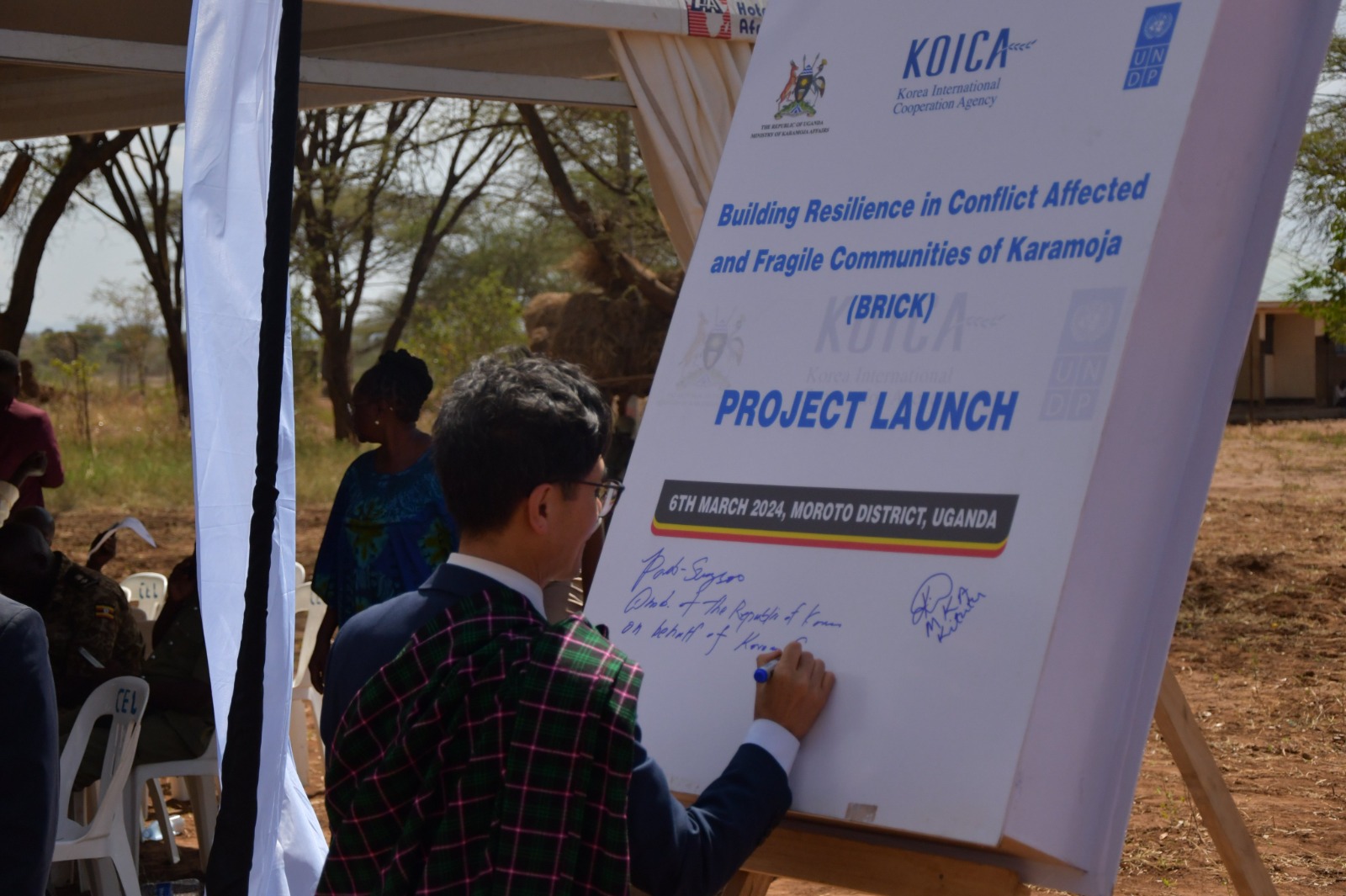
A plaque commemorating the official start of the BRICK project in Karamoja set off the implementation of an integrated sets of transformative initiatives across Kaabong, Kotido and Moroto Districts
Over the next two years, the BRICK project will focus on four interrelated dimensions of change, specifically a) expansion of livelihoods opportunities, while building community resilience, b) provision of transformative vocational skills, c) strengthening social cohesion and peaceful co-existence, and d) entrenching effective community participation, as stakeholders, and as beneficiaries across activity implementation. In doing so the project aims to achieve the twin outcomes on: Prevention and mitigation of conflicts and violence, and establishment of peacebuilding mechanisms; and 2) Strengthening gender responsive livelihoods of vulnerable communities through resilience actions.
By David Maina, Humanitarian, Development and Peace Nexus Specialist

 Locations
Locations